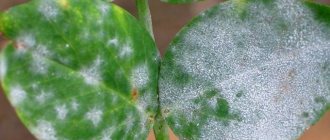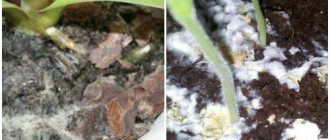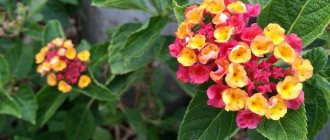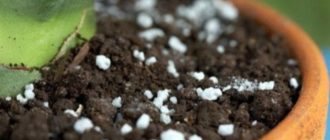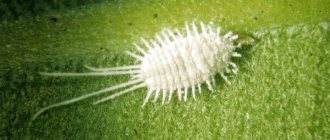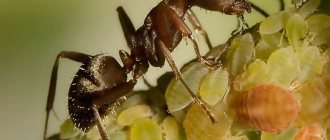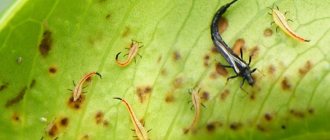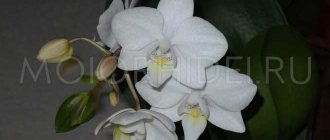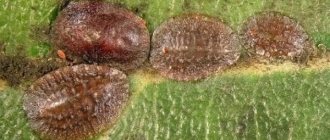An orchid is a beautiful plant, but at the same time capricious and expensive. That is why the happy owners of phalaenopsis and other species are so worried about their brainchild. They create all the necessary conditions for maintenance, constantly monitor the condition of the plant, periodically plant overgrown bushes, and all this only so that their orchid feels good and does not need anything.
But troubles happen that you can’t protect yourself from with the right temperature or watering regime. We are talking about the attack of pests and the development of infections in the orchid. Otherwise, these troubles are called white plaque.
What does white plaque look like on an orchid?
A white sticky coating can affect a flower in two cases: the plant has contracted an infection or it has been attacked by pests. Both the first and second are extremely dangerous for the orchid: they can quickly kill it. Treating such ailments is also quite difficult.
For your information! If the orchid has been attacked by parasites, then you should notice a white coating formed on the leaves (less often the stems), similar to cotton fibers or flakes. This means that the plant has been sick for quite some time, since the first signs of pest damage are the formation of sticky drops on the surface of the leaves.
If the plant becomes infected, the symptoms are somewhat different. Usually, when fungal infections occur, the lower surfaces of the leaf blades are the first to suffer. They become covered with a powdery coating, which grows as fungal spores develop. The danger is that the fungus grows very quickly, which means that the lack of timely treatment will lead to rotting of the orchid.
White plaque may appear in the following areas of the plant:
- on sheet plates;
- stems;
- root system.
On the leaves
Often, diseases and infections affect orchid leaves. Over time (and without proper treatment), the problem can spread to the stems, but rarely do problems start there.
Usually those flowers that do not receive proper care are at risk. Their immune system weakens and opens the way to all possible infections, among which white plaque is the most common. Lack of proper care leads to a failure of the orchid's metabolic processes, and this in turn affects the composition of the plant juice. It is because of this that various diseases and pests perceive orchids as easy prey.
Depending on the causes of the lesion, the disease may look different. Most often, the main signs of problems are:
- drying of orchid leaves and stems;
- premature completion of flowering (poor flowering);
- the inflorescences quickly fade and fall without even opening;
- Sticky drops appear on the leaves;
- Over time, the sticky drops turn into a white coating.
Important! If the plant has been affected by pests, then plaque appears on the front side of the leaf plates in the form of flakes or cotton fibers. If a plant is affected by a fungal infection, the disease will appear on the underside of the leaves and will look like a powdery coating that quickly grows over the surface of the leaf and stem.
On the stems
White bloom rarely appears on orchid stems. Most often, it moves there in the later stages of disease development from the leaf blades. It usually looks like this:
- sticky drops of sweet secretion;
- white powdery coating with the texture of cotton fibers;
- gray-green mold.
On the roots
Orchid roots in most cases are subject to infectious attack. This part of the plant is difficult for pests to access, so they prefer something simpler, such as leaves.
The main problem that orchid owners may encounter is mold. This fungal infection looks like a fibrous coating that can appear on all parts of the plant (except inflorescences). Mold reproduces with the help of spores, so the disease spreads quickly, affecting all healthy areas in a short time. If a fungus was brought into the house, expect complete infection of the plants.
The color of mold can vary:
- light gray (this variety is called white);
- green;
- black.
Outwardly, it looks like a shaggy crust that covers the roots of the plant. This disease is also dangerous because it can hibernate for a long time somewhere in the roots of the orchid. As soon as the external environment allows, the fungus immediately wakes up and begins its active activity.
Important! Mold can infect all parts of the plant as it spreads through the voids between the bark of roots and stems and along the surface of the soil.
Expert advice on caring for orchids with active guttation
Among the recommendations for caring for “crying” orchids, you can often find advice to wash the leaves of the plants with a shower. According to expert plant growers, this should not be done:
“Showering increases humidity and further stimulates guttation. Of course, it is better to get rid of sticky droplets on the leaves so that sooty fungus or more dangerous infections do not settle on them. But this must be done carefully, wiping the orchids with a slightly damp cotton pad.”
A. Davydovskaya, owner of the greenhouse, candidate of biological sciences
To reduce the manifestations of guttation, you need to normalize the air temperature and illumination of the orchid. The daily difference should not be more than 5-8 degrees, and daylight hours must be increased with the help of additional lighting.
Sticky drops on orchid leaves are a natural physiological reaction to certain environmental conditions. This does not require special measures or complex care. Simply removing the discharge is enough to prevent possible infections.
Why might it appear?
There are many reasons for the appearance of a harmful white coating on an orchid. Most often the plant gets sick:
- with improper care;
- non-compliance with temperature conditions;
- improper watering.
It is also worth noting that the development of the disease may be a consequence of contamination of the substrate. So thorough disinfection of all tools and soil is a necessary condition for normal plant growth.
Improper care
These include many factors. Most often, the plant suffers in winter, since at this time the amount of natural light decreases, the air becomes drier, and water stagnates in the soil.
Common consequences of improper care are rotting of the root system and the formation of fungal plaque on the roots, leaves or stems. All this happens due to waterlogging of the soil.
As a result, the orchid:
- dies;
- attracts pests;
- rots, infecting the substrate.
Important! When watering, focus on the consistency of the soil in the pot, and not on the time interval between waterings. If the soil is dry enough, you can add a new portion of water.
Careful adherence to the watering regime must also be accompanied by strict adherence to the temperature regime, since mealybugs, which are dangerous for orchids, feel quite comfortable in a dry and warm place, but are afraid of moisture. To keep the roots healthy, but at the same time protect the leaves and stems from pests, wipe the leaf blades with a damp cloth and use spraying instead of watering.
The temperature in summer should remain within +18...+30 degrees, in winter +20...+23 degrees is sufficient. Air humidity should be at least 55%.
Timely removal of dried parts of the plant is also important. This helps protect the orchid from the spread of pests. Standard pruning is excellent prevention.
Infection in the soil
Sometimes the cause of orchid disease can be contaminated soil. That is why most flower growers advise purchasing ready-made soil mixtures only in trusted stores.
If you prefer to prepare the substrate yourself, be sure to disinfect:
- Take pre-prepared bark for the substrate.
- Dry the bark in the oven at +60 degrees for 15–20 minutes so that all possible pests and bacteria die.
- Disinfect the plant seedlings before planting them in sterile soil.
After replanting the plant, throw away the soil from under it, especially if the plant is sick with something. Do not replant other flowers in such soil under any circumstances, as there is a high risk of their infection and death.
Powdery mildew
This disease most often affects the leaf blades of orchids. Primary signs of the disease appear only in small areas. This is why most flower owners do not notice them. Over time, the affected area increases significantly.
The carrier of powdery mildew is powdery mycelium, which is capable of multiplying to incredible sizes in a short time under favorable environmental conditions. Outwardly, it looks like the surface of a sheet sprinkled with flour.
Causes of powdery mildew infection:
- sudden changes in temperature;
- waterlogging of the soil;
- lack of timely therapeutic or preventive measures.
Lack of treatment for such an infection leads to the death of the plant.
Mealybug
Mealybugs, otherwise called hairy lice or felt lice, belong to the family of hemipteran insects, which have nothing in common with the worms we are used to. Many inexperienced gardeners confuse scale insects with scale insects, although these insects are not even similar in appearance.
The mealybug has an oblong body 2–6 mm in length, beige or white in color. Their body is completely covered with a waxy coating, reminiscent of ordinary flour. They have bristles on the sides and two pairs of long hairs on the back.
There are many varieties of these pests in nature. Only three species pose a danger to orchids:
- Bristly. Their females have a red body tint, dusted with waxy “flour”. Males resemble flies in appearance and are capable of flight.
- Citrus. The body of females has a pinkish color and a light coating. They are the ones who leave sticky drops (sticky sweet secretion) on the surface of orchids. Males are brown in color and can fly.
- Seaside. The body of females is colored in gray-pink shades. Males have wings that allow them to fly from place to place.
Important! This type of pest can also reach the roots of the orchid. In addition, they secrete a special secretion that stimulates the formation of fungal infections and develops bacterial resistance to chemicals.
What is the danger of sticky coating?
Regardless of what caused the orchid to become infected, lack of proper treatment can lead to its death. Fungal infection will cause rotting of the root system and death of the flower.
When infested with mealybugs, the female insects pose a particular danger, since it is they who, with the help of their mouthparts, gnaw holes in the orchid, stick to it and suck out the life-giving juice. These parasites prefer to build their clutches in the recesses of leaves, which look like small lumps of cotton wool.
Pests quite easily move from the flower to pots, window sills and windows. There they cover everything with their cobwebs. It closes the stomata of plants, preventing them from breathing, and outwardly it looks, to put it mildly, unaesthetic.
Female scale insects are excessively fertile. They are capable of laying eggs four times a year. The larvae hatch from the clutch after 10 days. The young are very nimble: individuals quickly navigate the terrain, find a place to feed and begin to develop. When fed, they grow quickly, filling ever larger areas with their colonies. If left untreated, such rapid reproduction will destroy the plant.
The appearance of scale insects may be due to the following reasons:
- the plant was previously weakened by attacks from other parasites;
- the orchid received improper care;
- the soil was contaminated from the beginning or had not been changed for a long time and therefore became depleted.
How to treat the disease?
If you notice signs of infection in your orchid, immediately disinfect the plant:
- Remove all flower stalks (regardless of whether they have lesions or not).
- Dissolve 15 ml of liquid soap in a liter of clean water and mix well.
- Using a cotton swab, wipe the plant with the soapy mixture, carefully removing any insects visible on the leaves and stems.
After this procedure, quarantine the plant for several days. Watch him. If its condition has not worsened, return the orchid to its original place and pay more attention to caring for it.
Important! In case of fungal infection, you need to transplant the orchid into a clean substrate and a new pot. After removing the plant from the old container, you need to rinse all the roots with warm water (+35 degrees), and remove the diseased parts. In case of infection, you need to soak the root system in a fungicidal solution for 15 minutes.
Chemical and biological agents
Pest control is in many cases more difficult than fungus control. The mealybug clings to its territory and will not leave it so easily.
The most effective drugs that can kill the parasite are:
- Fitoverm;
- Bankol;
- Mospilan;
- Aktara.
All of the listed insecticides fight both adults and larvae. After treating the plant with the preparation, close it with a plastic bag and leave for 25–35 minutes. This will help enhance the effect of the product. Do not carry out treatment in a room where someone lives: take diseased plants outside or at least to an uninhabited balcony.
Observe precautions when working with chemicals: protect all exposed areas of the body, face, eyes from accidental contact with the composition, do not drink, smoke or eat while processing plants.
Treatment with traditional methods
Traditional recipes will help cope with pests only in the initial stages of disease development. Don’t expect magical results from them if the parasite has already captured more than 50% of the flower.
The most effective means:
- Garlic infusion. Take 5 garlic cloves, pour 1 liter of boiling water and leave for a day. Strain the finished mixture and treat the affected areas of the flower with it.
- Onion infusion. Peel and chop one medium-sized onion. Fill the raw materials with warm purified water, leave the mixture to infuse for 2-3 hours. Strain the broth and spray the orchid with it.
- Pepper infusion. Take 50 g of hot pepper, pour 500 ml of boiling water over it, then place on the stove and boil for 5 minutes. Cool the finished mixture and strain. Treat the diseased plant with the decoction.
What to do with whiteheads?
The only possible method of getting rid of white sunken spots or white dots on an orchid is careful care:
- normal watering mode;
- timely treatment of pathologies.
If you monitor the condition of your orchid, the consequences of the disease will soon disappear.
Symptoms of the disease
Powdery mildew on orchids, treatment with folk remedies, preparations (analysis), methods (comparison of effectiveness).
Treatment begins at the first symptoms of the disease. A dense white-gray coating forms on the surface of the plants, which upon closer examination is a cluster of parasitic fungi Erysiphales. At the site of fixation of the mycelium, plant tissue is destroyed. Parasites draw juices and nutrients from the plant, which is why it looks oppressed and depressed.
After 2-3 days, the lower foliage begins to turn yellow and droop. Soon the leaves fall. In advanced cases, orchids die.
Preventative measures to prevent the flower from becoming covered with white fluff
In order to avoid such problems with your orchid, you should follow some preventive measures:
- Water the orchid only when the soil is completely dry.
- Periodically give the flowers a warm shower to remove excess moisture from the leaf plates.
- When temperatures drop, reduce the amount of watering.
- When daylight hours are shortened, use phytolamps.
- Observe temperature conditions.
- Carry out preventive treatment once every three months.
- Replant orchids only in proven soil.
Rate this post
Preventive actions
To avoid powdery mildew and mealybug attacks, you need to take some precautions:
- It is extremely important to provide the plant with proper care - watering regime, fertilizing, create a favorable microclimate and location in the room;
- carry out preventive spraying on time;
- each purchased copy must undergo quarantine;
- When replanting the plant, good drainage will be required.
We must not forget about regular inspection of not only orchids, but also other indoor plants that can become a source of infection.
